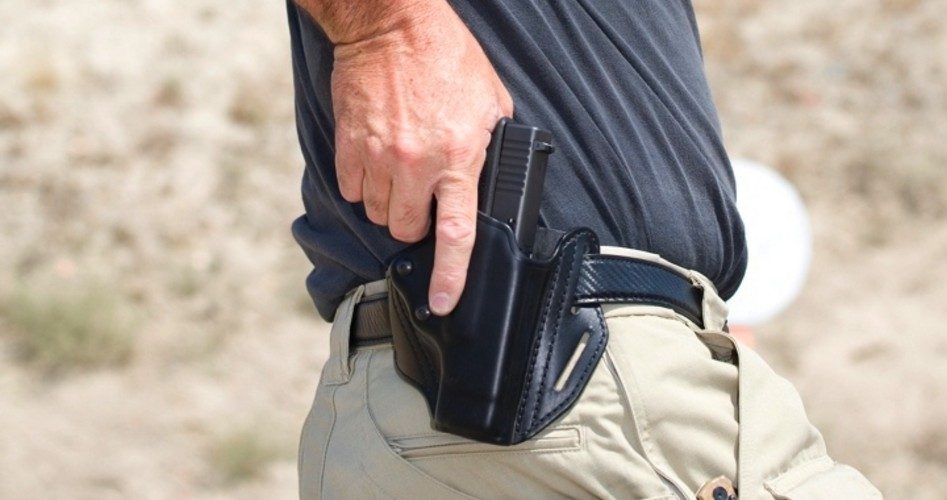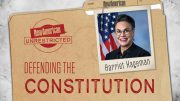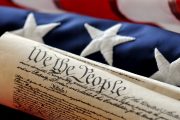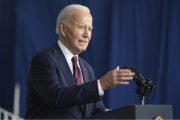
On January 1, 2016, a new Texas law will allow those Texans with concealed carry permits to carry their firearms openly, if they wish. That leaves just California (except in some rural counties, with a permit), Florida, Illinois, New York, and South Carolina with laws prohibiting open carry.
Much fuss is being made about the change — the first time since 1871 that Texas has allowed open carry — with law officers attending classes about how to handle the new law while business owners are deciding whether they should take advantage of a provision in the new law that would allow them to post signs denying open carry.
Al Flores, an attorney for the restaurant chain Gringo’s, which has 14 restaurants in and around Houston, decided against allowing customers to open carry: “We’re primarily a family environment … and so we decided it’s probably best not to allow open carry. We just felt that, knowing our customers, allowing someone to walk in openly carrying a weapon, it would make them feel a little uncomfortable.”
Kevin Simmons, the owner of 7th Street Gold & Silver in Fort Worth, made the same decision: “If I get somebody I don’t know coming into my store with a gun on their side, I don’t know if it’s for their protection or [if] they are going to rob me. I’m not going to take the chance.”
On the other hand, Dennis Wiles, the senior pastor of the First Baptist Church of Arlington, near Dallas, said that after talking it over with the church’s lawyers and some of its congregants who have been carrying concealed for years, “We decided it was best to allow responsible people to do this if they choose. We will probably assess the situation in a couple of months to see how it goes. When it comes to a church, I don’t think we’re going to see much difference.”
Some have expressed concern about how to handle an active shooter situation. With more than one person carrying, the question arises: who is who? Houston’s police chief Charles McClelland posed this: “When my officers are responding to situations or disturbances where a gun is involved, how are they supposed to know who the good guy or the bad guy is with a gun?”
The free market has already devised an ingenious device known as a “safety banner” or sash that a citizen can pull over his head to identify himself as a good guy. In a conversation with Mike Lessman, the owner of DSM (Don’t Shoot Me!) Safety Products, The New American learned that his sashes are increasingly being accepted and used not only by law-enforcement officers (LEOs), but private civilians as well. Each purchaser must prove that he has a concealed handgun permit before ordering, preventing bad guys from obtaining them.
Others think there will likely be little change after the first of the year. Terry Grisham, executive director of the Tarrant County (Fort Worth) Sheriff’s Office, gave good advice: “Over and above everything, remain calm. The world as we know it isn’t going to start turning backwards on its axis when this goes into effect.” Shannon Edwards, a staff attorney at the Austin-based Texas District and County Attorneys Association, added:
You never knew about it [if someone was carrying concealed] before and it didn’t give you heartburn. What we’re hearing from others states is that it’s not that big a deal. You’ll [likely] see people parading around with their guns this January 1, but by January 1, 2017, there aren’t going to be any parades. No one is going to care about it. It’s going to be yesterday’s news.
Almost a million Texans (out of a population of 27 million) currently have their concealed-carry permits, and most of them aren’t likely to change their habits. Besides, open carry might actually make them a target for a bad guy, according to instructors teaching handgun classes. Curtis Van Lew said, “It you are in a public place, and you have a handgun on in plain sight, if something goes down … you are going to be the first one they take out. I tell people if you open carry your gun, you are putting a bull’s-eye on your chest and back everywhere you go.”
The new law doesn’t apply to college campuses until August 1, giving colleges and univerisities time to make their own rules regarding open carry. Rice University and Texas Christian University (TCU) have already opted out, while state universities at present are split over the matter. Texas Attorney General Ken Paxton warned the schools against making regulations that prohibit a “substantial number” of students from carrying on campus.
Momentum for open carry began building after the Newtown, Connecticut, shooting when citizens began to realize that gun-control laws banning so-called “assault” rifles were ineffective and that they were going to have to start relying on themselves for protection. As Larry Arnold, the director of the Texas Concealed Handgun Association, explained: “After that we really started to see the K-12 schools looking at it. We have at least 70 school districts that have teacher carry one way or the other.”
There is at least one other benefit in Texas joining other states in allowing citizens to exercise their Second Amendment-protected rights without having to ask permission first: The entire conversation is moving from the federal level to the state level where it belongs. And it’s at the state level where most of the progress is being made.
However, one exception is California, where Governor Jerry Brown signed into law a bill banning concealed weapons at elementary, secondary, and college campuses. Andy Pelosi (no relation to California’s anti-gun U.S. representative), a spokesman for the Campaign to Keep Guns off Campus, said that that victory might be temporary, reflecting the momentum shift nationally toward private ownership of firearms without government restrictions: “I think our side had a very successful year defeating [pro-gun] legislation, but we know that these victories tend to be temporary, as the gun lobby will and does refile bills in most of these states.”
There is an irony in setting August 1 as the date when campuses must decide how to handle the new open-carry law. That will be the 50th anniversary of the Texas clock tower shooting, in which shooter Charles Whitman scaled the tower on the University of Texas at Austin campus with high-powered weapons and began picking off students as they headed to class. At the time, the campus was a gun-free zone, allowing Whitman 90 minutes to fire, reload, and fire again, killing 14 people and wounding another 32. He was finally subdued when armed officers, along with some armed civilians from off campus, ended the rampage. According to Arnold, the attack could have been even worse without civilian intervention: “[Whitman] was very limited in the targets he could seek because there were people, civilians on the ground, shooting back.”
Just five states remain oblivious to the obvious: that armed citizens are a provable deterrent to mass shootings. They are California, Florida, Illinois, New York, and South Carolina. And, of course, the District of Columbia.
Forty-five down, five (or six) to go.
A graduate of an Ivy League school and a former investment advisor, Bob is a regular contributor to The New American magazine and blogs frequently at LightFromTheRight.com, primarily on economics and politics. He can be reached at [email protected].



